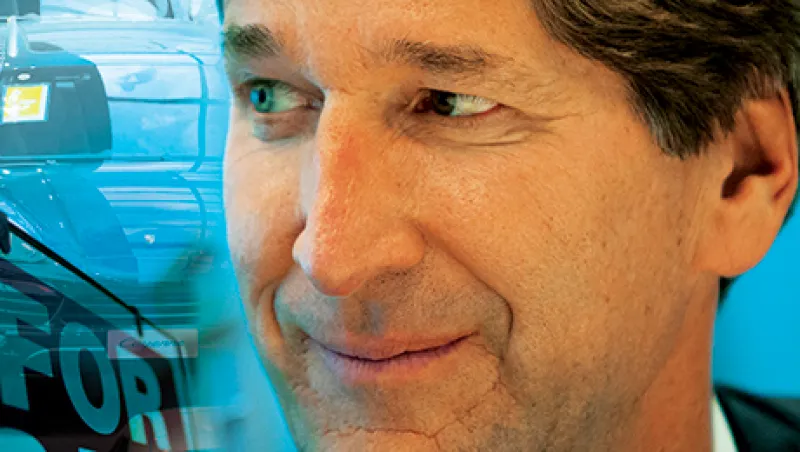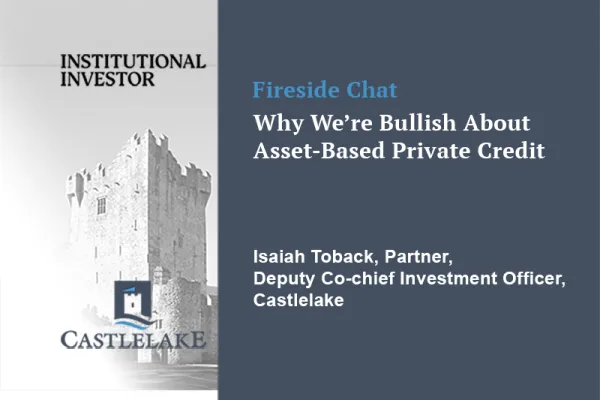Back in mid-2009, Bruce Van Saun had just spent a year dabbling unhappily in the world of U.S. private equity when he received a phone call from Stephen Hester, then chief executive of Royal Bank of Scotland Group. The Edinburgh-based bank was reeling from a massive write-down on its ill-fated takeover of ABN Amro and heavy mortgage losses from the financial crisis; a recapitalization would see the U.K. government holding an 81 percent ownership stake.
“Stephen said, ‘How’d you like to join me at the biggest turnaround on the planet?’” Van Saun recalls. He agreed and spent four years in London as RBS’s CFO, working hand in glove with Hester to slash the bank’s asset base to £806 billion ($1.32 trillion) from £1.56 trillion. Now the New Jersey native has come back stateside to take on what he describes as the next key mission in the turnaround of RBS: the public divestment of its U.S. subsidiary, RBS Citizens Financial Group, of which he became CEO on October 1.
As recovery from the financial crisis has dragged, RBS Group has come under intense political pressure in the U.K. to lift its capital levels and speed the transition back to private ownership. Selling off Citizens, which RBS acquired in 1988, looks like a quick and easy way to help achieve those aims. The Providence, Rhode Island–based bank, which runs more than 1,400 branches in 12 northeastern states, has $118 billion in assets, enough to make it the 21st-largest in the U.S., and a tangible book value of about $10 billion, according to Van Saun. “Even though Citizens was always conceived of as a core asset for RBS, you could certainly float off some of it in a way that would generate immediate capital advantages for the group,” he says, adding that for Citizens itself there’s significant value to being a public company. “So it’s a win-win.”
Van Saun, who spent 25 years on Wall Street and served as CFO of Bank of New York Mellon Corp. before moving to RBS, hopes to float a 25 to 30 percent stake in the regional bank by the end of 2014; RBS has pledged to fully divest the business two years later. The big challenge will be to boost performance ahead of the initial offering: Van Saun puts Citizens’ normalized annual return on equity at about 7.5 percent, whereas peers such as Cleveland-based KeyCorp and Cincinnati-based Fifth Third Bank generate closer to 10 percent. Given that previous chief executive Ellen Alemany deliberately shrank Citizens’ balance sheet after a series of precrisis misadventures, the new boss will have to grow the bank’s assets again — and fast.
Commercial banking, auto financing, student loans and mortgage origination are the areas Van Saun is targeting. Although he concedes those are many of the same market segments that burned RBS in the run-up to the crisis, he says the bank will pursue growth “intelligently, to good credit standards.” The time frame for bringing Citizens to market is tight, but Van Saun stresses that “we won’t build Rome in a day; we’ll just be upticking incrementally over the next year or two.”
Others are less convinced that the IPO will make RBS more attractive. “Citizens contributed a sizable chunk of core bank earnings as well as geographic diversification; this may not be the best environment for listing a U.S. regional bank,” argues Jason Napier, a London-based banking analyst at Deutsche Bank. If the sell-down of the rest of Citizens “is pursued aggressively,” before Van Saun has had time to improve performance, “we can’t see shareholders getting a decent price for this business,” Napier adds.
Van Saun points to his record at RBS, which included the successful IPO of Direct Line Insurance Group, the U.K.’s leading provider of home and auto personal lines, in October 2012. Two further sell-downs have followed, leaving RBS with a 28.5 percent stake and the insurer’s stock price up 25 percent since the initial offering.
The European IPO market was “pretty much shut” at the time of the Direct Line flotation, says Van Saun, “so the fact that we were able to turn this company around and bring it to market and position it with investors was well received. We kind of know how to do this.” • •
Read more about banking.







